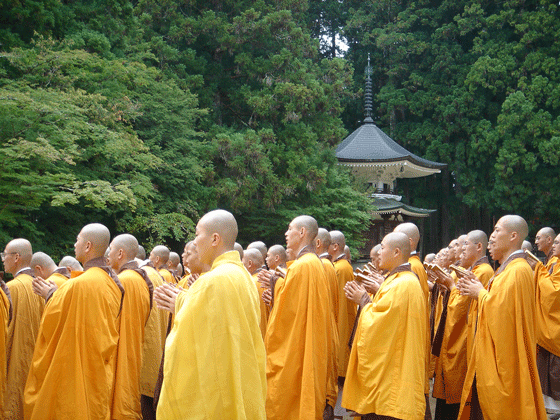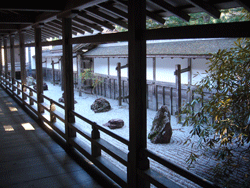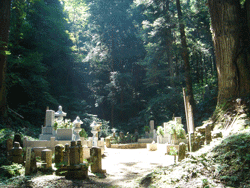Koyasan

![]() What is it?
What is it?
 Koyasan is the sacred home of the Shingon sect, a branch of esoteric Buddhism. Inscribed on UNESCO's World Heritage list in July, 2003, Koyasan is hardly a "hidden gem." But it is definitely worth a visit and is well worth a mention here.
Koyasan is the sacred home of the Shingon sect, a branch of esoteric Buddhism. Inscribed on UNESCO's World Heritage list in July, 2003, Koyasan is hardly a "hidden gem." But it is definitely worth a visit and is well worth a mention here.
More than 1200 years ago a priest named Kukai founded a Dojo on a narrow portion of flat land he found on top of this mountainous area with the objective of spreading the doctrines he had learned in Tang, China.
Ever since, Mount Koya has been witness to the training of a great number of ascetic monks, consequently leading to the construction of innumerable temples and towers in order to spread the knowledge of Buddhism and worship of the gods.
Just the location of this place is inspiring enough to make you agree with the ancient Japanese that this is indeed the place where the gods dwell. Surrounded by forests of venerable trees and deep valleys, this enigmatic town of temples has been called “the Japanese Tibet”.
With 117 temples and towers, every time you visit Koyasan you are very likely to discover new areas and enter new grounds, however during your first visit you should not miss these must-see highlights:
![]() Danjo Garan
Danjo Garan

An area to the West of Koyasan which comprises many temples and towers, among them the impressive Konpon Daito which is a 48 meter (157 ft) pagoda. Groups of ascetic monks frequently pray deep-toned Buddhist sutras inside.
![]() Kongobuji Temple
Kongobuji Temple
 The head temple of Koyasan as well as the other 3,600 temples devoted to Shingon Buddhism all over Japan. Inside you can see Japan’s largest karesansui garden (a garden made of rocks and sand) in which the landscape represents two dragons flying in and out of the clouds.
The head temple of Koyasan as well as the other 3,600 temples devoted to Shingon Buddhism all over Japan. Inside you can see Japan’s largest karesansui garden (a garden made of rocks and sand) in which the landscape represents two dragons flying in and out of the clouds.
![]() Oku no In area
Oku no In area
 Oku no In is an ancestral forest-cemetery with colossal cedar trees and about 200,000 tombs of warriors, feudal lords and warlords very famous in the history of Japan. The Kobo Daishi Gobyo or the Mausoleum of Kobo Daishi (the real name of the founder priest Kukai) is also located here, and next to it you will find the Torodo, a hall illuminated by over 20,000 lanterns.
Oku no In is an ancestral forest-cemetery with colossal cedar trees and about 200,000 tombs of warriors, feudal lords and warlords very famous in the history of Japan. The Kobo Daishi Gobyo or the Mausoleum of Kobo Daishi (the real name of the founder priest Kukai) is also located here, and next to it you will find the Torodo, a hall illuminated by over 20,000 lanterns.
![]() Where is it?
Where is it?
From Nankai Namba station take the Nankai Koya Line to the terminal station Gokurakubashi. By limited express (tokkyu) the ride takes about 80 minutes.
From Wakayama JR Station take the JR Wakayama Line to Hashimoto Station. Change to the Nankai Line and to go to Gokurakubashi Station.
From Gokurakubashi, take the cablecar up Koyasan. The ride takes about five minutes and costs 380 Yen. From the top station, it is a 10 minute bus ride into the town center. Note that it is not permitted to walk along the street which connects the cablecar station with the town center.
Submitted by Francisco Alcantara